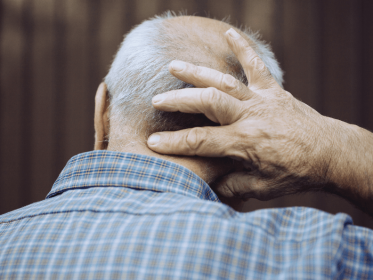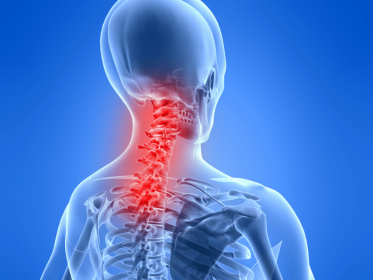- +1 888.407.0616
- info@mdchoicehospicecare.com
- Mon - Fri 9 AM - 5 PM

Neck discomfort is a prevalent concern these days. It might be due to an individual’s lifestyle, as well as any linked ailment. However, aging can be a major source of neck discomfort.
Degenerative processes in the intervertebral discs, or “osteochondrosis,” are usually the consequence of natural processes that occur in the body after thirty years, against the backdrop of aggravating factors such as an unhealthy or merely inactive lifestyle. In truth, as people age, their intervertebral discs gradually expand, causing them to thin and distort.
As a result, many processes, including cervical spondylosis, are more advanced in the elderly. If an elderly individual has severe kyphosis, the horizontal posture of the head, especially when lying down, will surely produce cervical extension. This might result in circulation problems in the vertebral artery, which can cause severe headaches and disorientation. As a result, older adults with kyphosis and symptoms of cervical spondylosis are advised to sleep on a firm pillow. In addition, older persons with cervical osteochondrosis might utilize a neck brace or get a therapeutic massage twice a year.
Cervical spondylosis symptoms, in fact, differ from those of other disorders in that they are characterized by higher mobility. At first, the condition causes discomfort in the back of the head and neck, dizziness, blood pressure decreases, headaches, and crushing of the cervical vertebrae when rotating the head. Osteochondrosis-specific symptoms arise later as a result of progression and a lack of therapy.

The symptoms are the following:
When the first symptoms of osteochondrosis are detected, it is necessary to consult a neurologist.
In fact, when we grow older, our bones are gradually getting worn. That may cause further complications. The main causes of cervical osteochondrosis may include;
Age and lifestyle can also be the cause of disease development. Patients who smoke are at risk of developing spondylosis.

The following stages of the disease are generally used by a doctor;
However, there is currently no widely acknowledged staging system for osteochondrosis. Hospitals used to classify it by time period, however, this is an old practice. Currently, osteochondrosis, spondyloarthritis, spondylosis, arthrosis of the semilunar joints, and protrusions are identified as degenerative-dystrophic disc disease (DDZP).
First of all, you should consult a doctor if you have noticed any of the above-mentioned symptoms. Your doctor may ask you to do some movements in order to check the motion disorders. Later the tension of the spinal cord must be checked out. Nowadays, there are a lot of available methods to diagnose the cause of neck pain such as X-Ray, MRI, Electromyography, etc.
Treatment is based on the severity of the condition and is, in reality, individual to each person. The doctor should order a complete evaluation because there might be other health concerns. Medication, treatments, and, in rare situations, surgery are the three major methods of therapy.
It is highly recommended to see a doctor whenever you feel like you experience one of the symptoms. Some cases also require physical activity, heat and ice therapy, and neck braces.